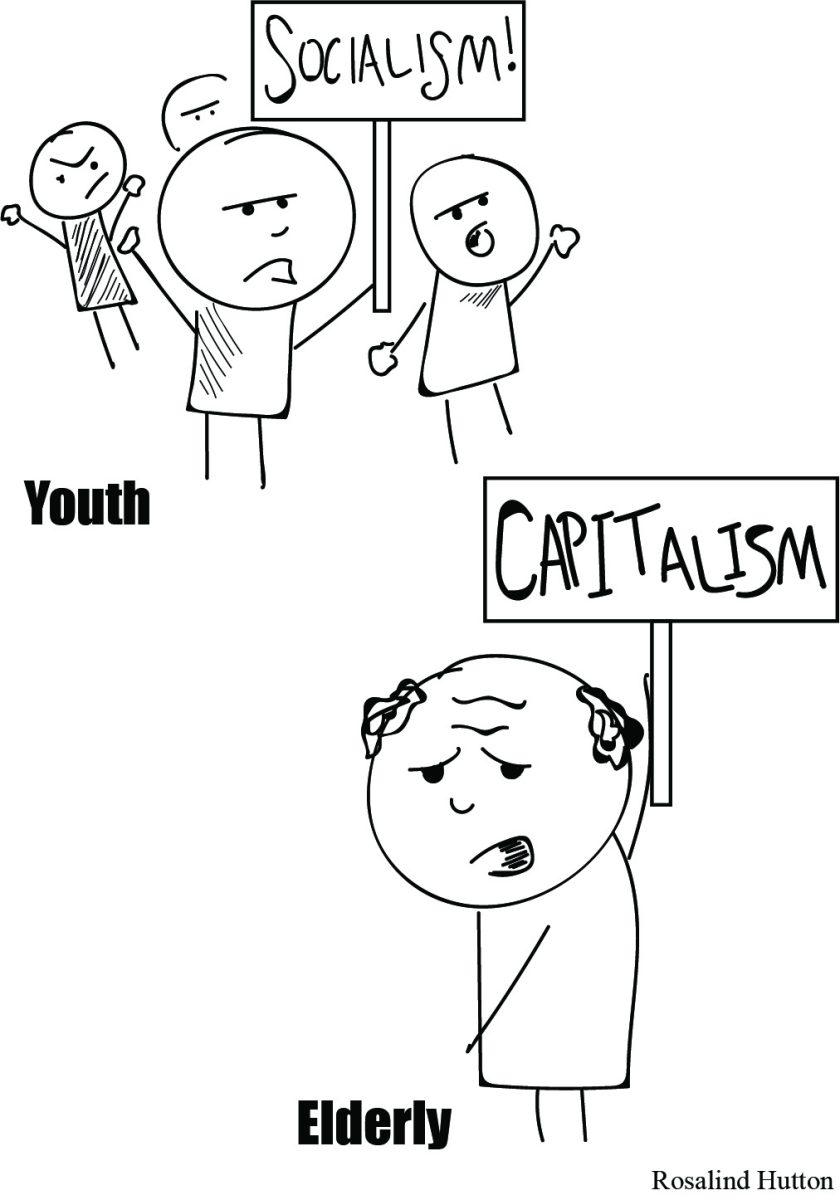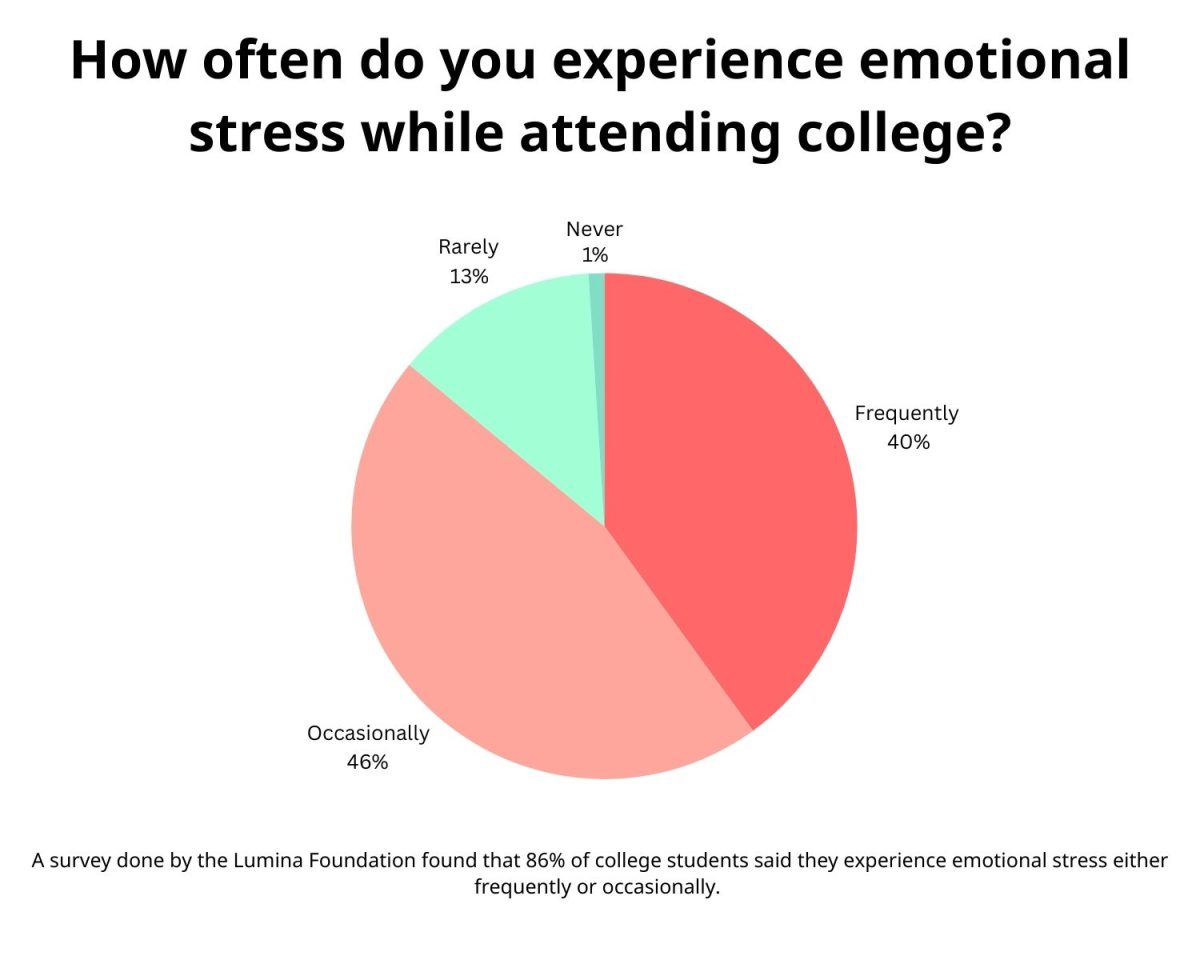With the socialist Alexandria Ocasio-Cortez’s victory over the liberal democratic Joe Crowley in New York’s 14th District Democratic primary earlier in June of this year, socialism was once more thrust into the public’s conscience. Merriam-Webster reported searches for the word socialism spiked 1,500 percent following Ocasio-Cortez’s success.
However, precedent has shown socialism is not the most popular topic in mainstream America, considering our multiple Red Scares in the 20th century and the whole Cold War debacle. Indeed, capitalism and socialism are inherently at odds with one another, vying for control over the sympathies of the masses, and America, being exhibit A for the success of capitalism, is naturally a hostile place for the ideology of Karl Marx and his successors.
Of course, it has not stopped socialism from having a long history in the U.S. The Socialist Party of America formed in 1901, even prior to the Leninist revolution in Russia, and while the Socialist Party ceased operations in 1972, the Democratic Socialists of America have functioned since 1982. Even more recently, Ocasio-Cortez also worked for Bernie Sanders campaign in 2016, who is a self-avowed democratic socialist. A quick aside: the distinction between democratic socialist and socialist are not important to any point I’m trying to make, but rest assured, there is one.
Socialism is not a new idea to America, and it is rapidly becoming popular with millennials. If you looked at my parents’ age range of 50-64 in a 2016 Gallup poll reported by Frank Newport, you would find only 27 percent of participants felt a positive reaction to socialism. However, look at the millennial age range of 18-29 in the same poll, and positivity toward socialism jumps to 55 percent.
This begs the question: Why do younger people tend to view socialism more favorably? My father would say they have forgotten the good capitalism has brought and the evil socialism wrought, but I think that is simplifying the issue. It is not like millennials do not know about Stalin or Mao and the millions who died under their rule, but some like to frame it in this particular light.
The Chicago Tribune’s article amazingly titled, “It’s the spoiled children of America that are drawn to socialism” by Cal Thomas, is the perfect example. Thomas argues any millennial who leans toward socialist ideology has never experienced socialism, is reaping the benefits of capitalism and has never served their country or know anyone who has.
This kind of thinking is incredibly reductive, unfortunately. Rather than ad hominem the millennials who believe in the ideology of socialism, it would be far more productive to try and understand why millennials are beginning to drift toward the ideology. The same Gallup poll from earlier shows 57 percent of the 18-29 age range also has a positive reaction to capitalism, so it is not that millennials are opposed to capitalism, in essence. Far more likely, it seems, millennials are opposed to the current implementation of the balance between socialism and capitalism.
You will hear the GOP spout off lots of job figures and gross domestic product numbers because they are correct in saying the economy is doing great, currently. Lydia DePillis with CNN Money reports unemployment is at an 18-year low, and GDP grew 4.1 percent in last quarter, which is far more than the 2.2 percent in the first quarter of this year. However, it is important to ask where the money is going, and how much it is worth to the average American.
The real median American household income is around $59,039, according to the St. Louis Federal Reserve Bank as of September 2017. This is the highest median income on record and should be appreciated, but it is only about $10,000 more than the 1984 real median household income of $49,335 dollars. “Yeah, but you can’t expect such rapid growth from a median income, Dylan,” I hear you say, “10,000 in 30 years is fairly respectable.”
I would agree with you, and funnily enough, Emmie Martin with CNBC reports a 2010 Princeton study found $75,000 is the average amount where people feel the most correlation between money and happiness. Maybe in 45 years, the middle-class will reach peak happiness, and I will be there to see it.
Here is the kicker, though. According to the Pew Research Center, wages for the average American worker have not budged in over three decades. The purchasing power of a worker in 1978 is basically the same as a U.S. worker now, give or take a couple of dollars an hour. The median increase of income to the American household is exactly that: the median. The middle class has seen some growth, but those less fortunate than my parents or me, for that matter, have seen very little, comparatively.
A report from the Congressional Budget Office found the lowest-income Americans, the lowest quintile in their report, grew their after-tax income about 46 percent since 1979 to 2013, and the three middle quintiles grew about 40 percent. Even the top quintile, the 81-99th percentile of Americans, only grew about 70 percent. All of this growth only looks bad after seeing the top one percent of Americans, the richest of the rich, grew 192 percent in the same time frame. If you look pre-recession, the number was close to hitting 300 percent.
This is what is known as income inequality. The share of wealth in America is lopsided, as Carmen Reinicke with CNBC reports the top one percent of families take home 26.3 times as much income as 99 percent of Americans. The GINI index, used by the World Bank to measure income inequality in a country, shows the extent of the problem in the U.S. In 1979, America sat at 34.6 on the GINI index, a number closer to zero indicating a lower amount of inequality. By 2016, we now have moved to 41.5.
Put in practical terms: the top one percent own 40 percent of all wealth in America, and the top 20 percent own 90 percent of all wealth, both statistics reported by Christopher Ingraham of the Washington Post.
Now I could go into whether this is deserved wealth, begotten through blood, sweat and tears, but to finish out this article, I want to return to discussing what this means for socialist millennials. The National Center for Education Statistics found four-year post-secondary education, private or public, has more than doubled in price since 1985, adjusted for inflation. Similarly, CNBC’s Ester Bloom reported the average American spent around $9,596 on healthcare in 2012, which was a sharp increase from 2007’s cost of $7,700.
This is compounded by the fact the Peter G. Peterson Foundation, which focuses on resolving fiscal challenges within the U.S., found the U.S. spends more than twice what other developed nations spend per capita on healthcare, yet has a lower life expectancy than most of Europe.
When you hear young socialists talk about free healthcare, free college and wealth redistribution, it is because they see there is a growing problem in America with all of these factors. No one decides to change a system when it is working for their benefit. They decide to change the system when it is working against them. They look at the issues we face today and see the free market has not rectified them, and the American dream which was promised to them is far out of reach.
Therefore, let me return to the fantastically applicable, “it’s the spoiled children of America who are drawn to socialism” by Cal Thomas from earlier. First, telling someone to go live in a collapsing state like Venezuela, in order to experience what socialism does, is both ignorant and unproductive.
Venezuela’s current collapse is a consequence of many factors, and while one of those may be its implementation of socialist ideas, the majority of Venezuela’s woes come from its over-reliance on oil in its economy, its destruction of civil rights and policies that both restricted and relied upon a free-market system. In light of this, calling Venezuela a truly socialist state is an error. Venezuela always had private property, and it always had a free market. It was simply accompanied by some nationalization.
Second, the people in America who are drawn to socialism are the ones who were burned by capitalism, plain and simple. The burning could be from a moral standpoint or an economic standpoint–both get the same result. They are people who see a problem in the current American system, and they wish to fix the system.
They could, in fact, be benefiting greatly from the capitalist system, but they see socialism as a better economic alternative or more societally beneficial, as a whole. It could be very true they do not know someone who served in the military or did not do so themselves, but those are not prerequisites for having an opinion on how to fix something. While I thank him for his service, I would hope Thomas sees the whole reason he served was so others at home could attempt use their rights to change the country.
You can certainly believe socialism is not the answer to this quandary of societal inequality, and I will echo the sentiment. Despite this, I recognize the problems we must deal with, and I am not content to simply let it lie and hope tax cuts will suddenly make millionaires more philanthropic.
America was not always this economically unequal, and I truly believe regulated capitalism can breed brilliant results once more. You and I, dear readers, are the future of this nation, and we must act like it. America has the capability to be the home for the free and the brave, regardless of income or background, but it requires fine-tuning and upkeep. Let us allow our descendants to read about our Gilded Age and thank God things became better, because we made sure they did.
Categories:
The lesson to learn from socialism
About the Contributor

Dylan Bufkin, Former Editor-in-Chief
Dylan Bufkin served as the Editor-in-Chief of The Reflector from 2020 to 2021.
He also served as the Opinion Editor from 2019 to 2020.
0
Donate to The Reflector
Your donation will support the student journalists of Mississippi State University. Your contribution will allow us to purchase equipment and cover our annual website hosting costs.
More to Discover







